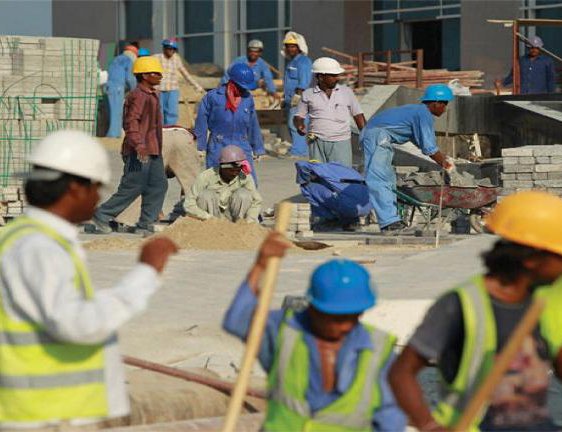
Labor migration remittance represents more than a quarter of Nepal’s economic output. More than 4 million labor permits were issued in the last decade. In the fiscal year 2018/19 volume of remittance reached 8.79 billion which is the 28% of the GDP of the year. In the last year alone Department of foreign Employment issued 236, 208 labor permits which averages at 650 per day. Qatar, Malaysia, Saudi Arabia, United Arab Emirates and the Kuwait were the top destinations for Nepali migrant workers.
With the easing of the lockdown 600,000 migrant workers are expected to return Nepal. According to the report of International Labor Organization (ILO), an estimated 127,000 migrant workers are likely to return to Nepal due to the job loss and increased anxiety about their health, while additional 400,000 may follow in the mid-term due to expiration of visa and non-renewal of contracts. This year 2020 assumes that sharpest decline in remittance in recent history. According to the World Bank it will fall by 20% because of cut in wages and losing employment.
Nepal Association of Foreign Employment Agencies (NAFEA) estimates that the proportion of job loss for Nepali workers in key countries of destination is as follows: 30 per cent in the UAE and Malaysia, 20 per cent in Qatar and Saudi Arabia, 15 per cent in Kuwait, 12 per cent in Bahrain and 10 per cent in Oman.
There are over 115,000 migrant workers who had received labor permits but were unable to travel for foreign employment. Managing the return migrants has been identified one of the key challenges ahead for government. International flight will resume starting August 17. According to the Foreign Employment Board (FEB), the number of migrant workers expected to return home and those who have lost their jobs shows at least 127,000. Nepali migrants will return to Nepal once travel restrictions are lifted while another 407,000 others are expected to return in the long run.
The worldwide economic slowdown brought by COVID -19 pandemic, it is likely that those workers who have lost their job, will not re migrate. So, it is a big challenge to government of reintegrating returnee migrant workers in the national labor market which is itself in the whirlpool of unemployment crisis.
Challenge for reintegration
The challenge of reintegration of returnee migrant is itself like as the corona pandemic economic crisis settlement for government. Migrant workers are particularly vulnerable to the impact of the COVID 19 pandemic, which has constrained both their ability to access their places of work in the countries of destination as well as their ability to return to their countries of origin.
Government should formulate a plan to financially support migrant workers who have lost their job. In order to secure their livelihood and their families short-term cash transfer budget should be allocated. Government should collect the details of returnee migrant skill, sector of employment and preferred area of work and training needs of returnee migrant workers should be done. Around 70 percent of migrants are unskilled labor force, whereas 11 percent are semi-skilled, 15 per cent are skilled and only 0.2 per cent are professional. Most of returnee migrants are of unskilled and semi-skilled category.
Around 60 percent of Nepal’s households affected as remittances drop due to global recession. Due to impact of COVID 19 Nepal could face multi burden economic crisis. The primary focus so far has been managing the health sector and implementing the lockdown. Another the most immediate threat is famine. Nepal is ranked 72 out of the 118 countries in Global Hunger Index report last year. After the economic crisis of COVID 19, the primary surveys estimated famine would rise unprecedently.
The government should invest in expansion of public employment program. Government has opportunity to build agriculture-based economy with the skills of returnee migrants. We need to capitalize this opportunity the migrants labor force into the farm production. The federal government in the coordination of the local level municipalities and wards need to get started support for seeds, fertilizers, tools and even management of market. Government should design and implement a comprehensive entrepreneurship development program like as business startup support, close mentoring, product service marketing. Enhancing the self-assessment program and minimal interest loan facilities to prioritize migrant workers who returned after corona pandemic.
Despite there are variations of challenges has arisen along with the return of migrant workers, government should use the returned youth force to build back the country economy. Government should move ahead with a comprehensive plan to create decent work opportunities for returnee migrant workers.
Twitter: @sapanaPhuyal
















